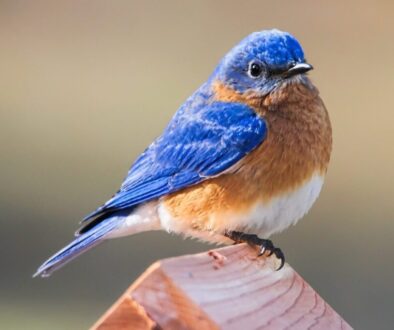The Monarch Butterflies Tale or The Hungry Hungry Caterpillar
Photo by Bill Burlow

This paper was written with the sole intention of informing consumers about the products they may currently be buying. Hopefully with enough demand from consumers industries will supply safer and more sustainable products.
One of the most iconic insects in North America is the Monarch Butterfly. Monarch Butterflies are found in all of the lower forty-eight states. Some states have year-round residents while others host them for the summer. These butterflies pass through the remaining states during migration. This vibrant, resilient, and tough insect is unfortunately experiencing a population decline. There is something relatively simple that the public can do to help this insect. That is to plant milkweed.
Monarchs are incredible insects with an interesting life cycle. Half-way through migration they die and the next generation continues along the route. So, it takes four generations to complete both the winter and summer migration. It also means that these insects need a place to lay their eggs on their journey. They lay their eggs on milkweed plants. Monarch butterfly caterpillars only eat milkweed (S. Reppert and J. Roode 2018).
🐮Places That Monarch Butterflies Can Find Abundent Milkweed🌱
Milkweeds are plants found in areas of moderate disturbance. Historically both milkweeds and nectar producing flowers existed together in continuous grasslands (E. Geest, Wolfenbarger, L and McCarty J. 2019). These grasslands include places like pastures and agricultural areas.
Livestock don’t tend to eat milkweeds since they cause problems with their digestive system. So it works out for both the monarch and the livestock. Monarchs prefer agricultural fields since the plants have more nitrogen, which makes them desirable (J. Pleasants and Oberhauser, K. 2013). Currently, monarchs are contending with a few threats to their population numbers. One is habitat fragmentation. It is harder for them to find large fields where both the larvae and the adults can eat.
🧥Herbicides Cause Problems For Monarch Butterflies 💉
Most herbicides do not kill milkweed, so farmers just put up with them. Plus, these plants have economic value. Some people use milkweed for seasoning and preservatives. It also has some medical properties. The thick white latex that the plants secrete is used for stuffing pillows, sleeping bags, jackets, and comforters. So it is to the farmer’s advantage to let some of the milkweed flourish (Lindsay Stafford Mader 2014).
In 1970 an herbicide called glyphosate was invented. It had the power to kill milkweed. However, most farmers did not use it. Unfortunately, in the 1990’s GMO’s started to get a foothold in agriculture. This herbicide was used on all fields with GMO seeds, effectively wiping out milkweeds in those fields. This action reduced the monarch butterfly populations by up to 81%.
🛣️Other Options For Monarch Butterflies🥚
There are other fields containing milkweed including Conservation Reserve Program lands, roadside milkweed and homeowner’s gardens. These areas tend to have less desirable milkweed, so the monarchs are not as abundant in these places. However, if these agricultural practices continue these might soon be the monarchs only option (Lindsay Stafford Mader 2014).
Some homeowners lawns more desirable milkweed than others. Apparently, monarchs only lay their eggs on 27 different species of milkweed. They’re over 120 species of milkweed so it is important to plant the right ones (Lindsay Stafford Mader 2014). In addition, monarchs like having four or more different species of milkweed planted together. People who have houses in the historic range of monarch butterflies should seriously consider planting milkweed.
🌱Plant Milkweed For Monarch Butterflies🌱
As a citizen planting milkweed in any type of garden has positive benefits. Milkweed has a sweet odor and some of the plants are quite aesthetic. In addition, monarchs pollinate squash and blueberries. So if you want to grow this type of food it is in your best interest to plant milkweed. Milkweeds are not picky they grew in well-drained soil with a pH range of 4.8-7.2. Remember it is best use environmentally friendly herbicides to maximize the chances of helping monarch butterflies (see the War of the Weeds).
Plus planting milkweed is a patriotic thing to do. Let’s all work together to save our national insect. With regulations and dedicated individuals, we took our national bird off the endangered species list. Hopefully as a nation we can increase the butterfly population numbers in the same manner.
Monarch restoration efforts are presently taking place in the United States. To learn more the reader can click on the following websites: Monarch Watch (https://monarchwatch.org), Xerces Society (https://xerces.org/monarchs/cities-towns), and (https://monarchbutterflylifecycle.com/blogs/raise/hunt-gather-protect-monarch-eggs).



